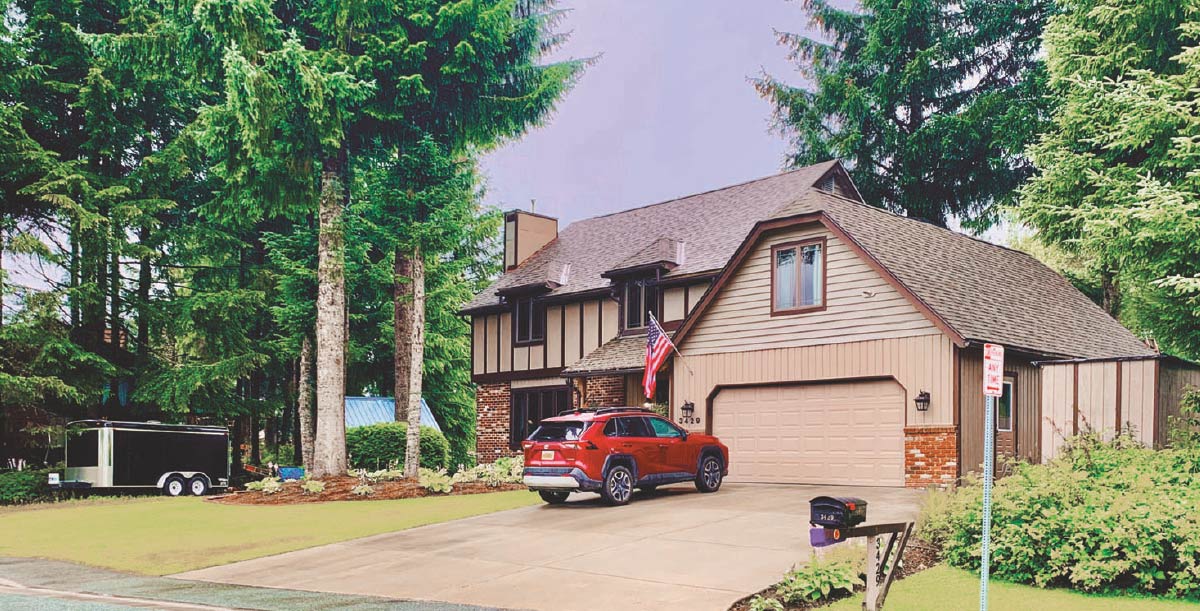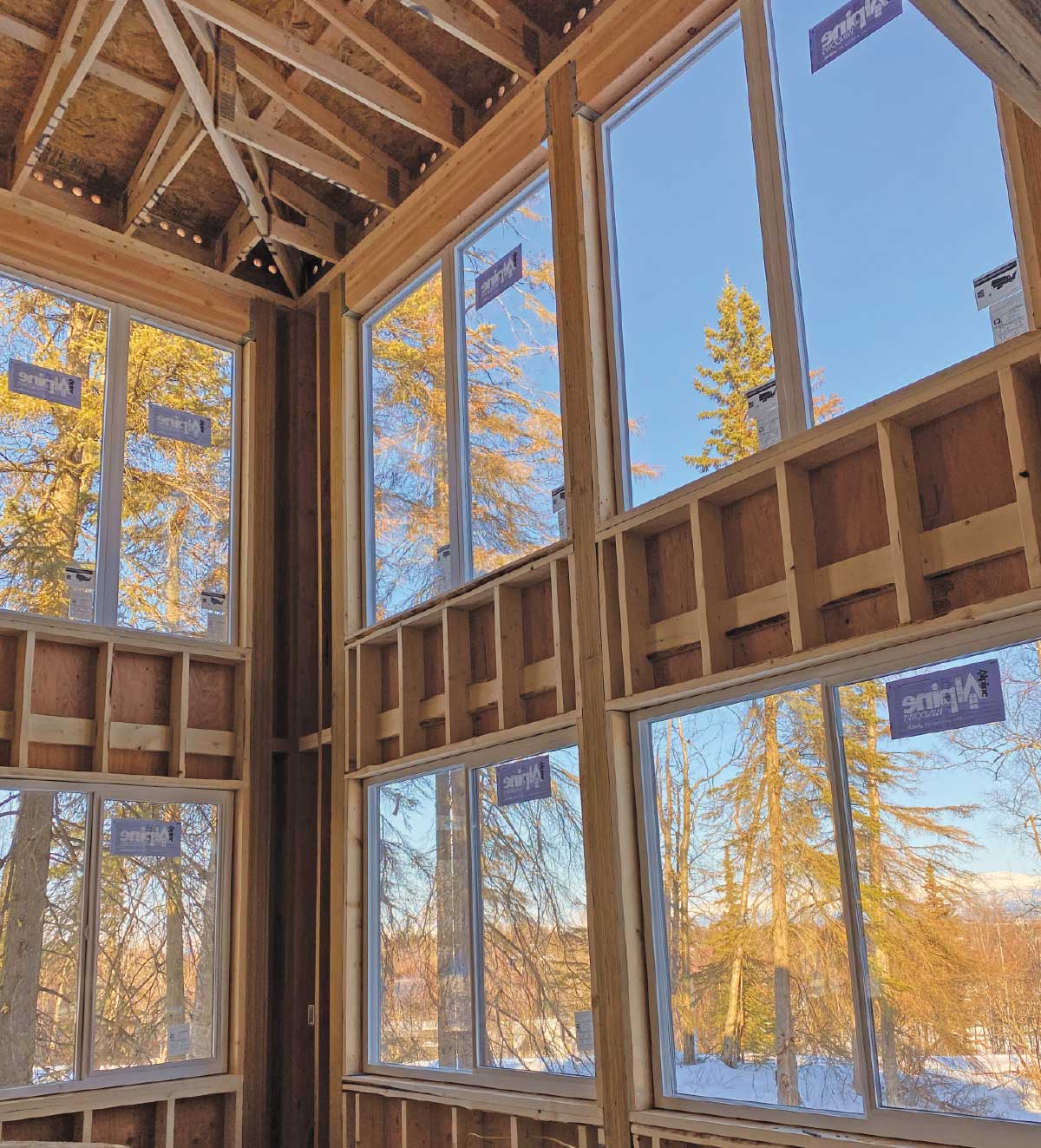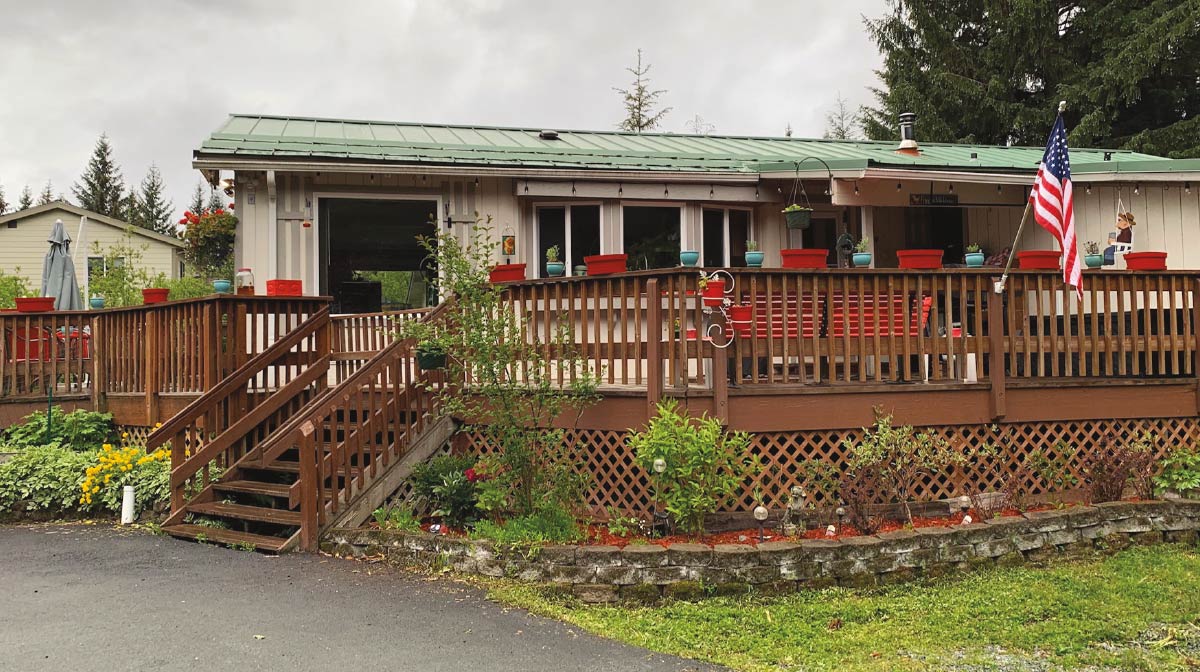Homeowners
Cashing In
he word “unprecedented” was tossed around a lot in 2020, and it can also be used to describe what’s been happening in the residential housing market since the pandemic hit. A mix of low interest rates, lack of inventory, and more time spent at home has resulted in a real estate boom unlike any other.
According to Redfin, a national real estate brokerage, home prices nationwide were up 16.7 percent year-over-year in March. At the same time, the number of homes sold rose 13.4 percent and the number of homes for sale fell 52.5 percent.
And Alaska’s not immune from this housing frenzy.
“I’ve been in business for forty years, and I’ve never seen such a high demand for homes and lack of inventory,” says Connie Yoshimura, broker/owner of Berkshire Hathaway HomeServices Alaska Realty. “What we’re seeing here is very much like the housing market in the Lower 48 with multiple offer situations, bidding wars, and escalation clauses in purchase and sale agreements. And this is happening at all price points because of historic low interest rates.”
“Even if interest rates went up 1 point—and historically, they go up in smaller increments—at the end of the year, an interest rate of 4 percent is still an incredibly low rate,” says Yoshimura. “Rates like this bring more buyers into the marketplace.”
It also causes a domino effect: when someone buys a condo, the condo owner may move to a single-family home, causing that homeowner to move into a larger, more luxurious home or a place with more land, or to divest and buy a second home or cabin.
According to Karen Wright, past president of the Southeast Alaska Board of REALTORS and a realtor with Southeast Alaska Real Estate, because of low interest rates, what homebuyers can afford now is drastically different than what they’ll be able to afford when rates go back up.
“If you’re paying 4.5 percent on a 30-year loan, your mortgage payment on a $490,000 home is $2,482 per month,” she explains. “Reduce that to 3.5 percent, and you’re paying $2,200 per month. You can put $10,000 more toward a home with that lower interest rate for the same monthly mortgage payment.”
Matt Dimmick, founding member of Keller Williams Realty Alaska Group, adds that people are also saving more money as a result of COVID-19, giving them more investment opportunities.
“With the pandemic, fewer people are traveling, which is pretty expensive to do from Alaska, and they aren’t going out to eat,” he says. “The lower interest rates are encouraging them to put that money into a piece of real estate, especially after being penned up in smaller dwellings dreaming about bigger homes.”
Southeast Alaska Real Estate

Southeast Alaska Real Estate
There are a number of reasons why supply is low, depending on where in the state homebuyers are looking. In Anchorage, for example, three years of a statewide recession before the pandemic slowed the building of new homes, as did having viable land on which to build.
“The recession resulted in fewer than 200 new single-family homes being built in Anchorage during the three- to four-year period prior to the pandemic, resulting in less than one month’s worth of inventory,” says Yoshimura. “We also have a shortage of residential land zoned for single-family homes; most of the land available now is difficult and expensive to develop, with wetlands and the need for off-site extensions for water, sewer, and roads.”
Southeast Alaska Real Estate

Southeast Alaska Real Estate
“Because we are such a small housing market in relation to communities in the Lower 48, our supply chain was disrupted first,” says Yoshimura, adding that tariffs attached to soft lumber coming out of British Columbia exacerbate building issues. “We are more than twelve weeks away from getting new appliances and lighting fixtures because much of that comes from China.”
“Contractors are building as fast as they can, but they’re facing supply problems as a result of the pandemic, as well as huge spikes in building material costs,” adds Dimmick. “In some cases, they’re having a hard time pricing new construction property, because by the time a home is finished, it can’t be built for the amount it cost to build.
“In Anchorage, there is also a lack of quality buildable lots, which is causing a migration out to Wasilla where builders can find more land and create a more cost-effective property that way,” he continues.
More than 3,200 homes in Anchorage sold in 2020, the most in more than a decade and well above the annual average, according to the Alaska Multiple Listing Service (MLS). As of December 23, 2020, Anchorage had seen a 25 percent increase in total sales volume at $1.25 billion, not including condos and mobile homes. In 2016, the average time on the market was 51 days; in 2021 it was 42 days, an almost 20 percent decline.
Even where there’s a lot of building going on, houses are still in short supply.
Southeast Alaska Real Estate
Southeast Alaska Real Estate

“Of the single-family homes, including townhomes, that can be purchased and moved into in the next sixty days, there are only seven properties available,” she continues. “The rest are under construction. That’s a pretty significant figure.”
Southeast Alaska Real Estate

Southeast Alaska Real Estate
“In new construction, the prices just keep going up,” Wright adds. “Properties that are under construction have jumped $20,000 since they were first listed, and they are not even built yet! A large part of this is the huge increase in the costs of building materials, which is being passed on to the consumer.”
When homes do become available, there are often numerous buyers, which can result in escalating prices and bidding wars.
“Because of such low inventory, we’re seeing multiple offers on homes, and homes selling within a day or two,” says Yoshimura. “For example, in Girdwood, which is a very difficult area to get into, we recently had a listing that was appropriately priced and received offers $100,000 over the list price. That is a good indication of how anxious buyers are to get into that market.”
“It’s been insane,” says Wright of the changes wrought by low supply. “For example, a brand-new property just came on the market today with the caveat that all offers would be reviewed on a certain date at a specific time. Five years ago, you weren’t told when sellers were looking at offers, or when they would get back to everyone.
Berkshire Hathaway HomeServices Alaska Realty
Berkshire Hathaway HomeServices Alaska Realty

In such a hot market, a lot of people are considering selling their homes to cash in.
“While it has encouraged some people to take advantage of the price jump, it’s a double-edged sword,” says Dimmick. “They want to sell and stay in the area, but it’s hard to find a replacement property.
“With people paying more than asking price, taking homes as-is, and even paying sellers’ closing costs, it’s very competitive to get a house for a buyer,” he adds. “Right now, that’s the most stressful part of being a buyers’ agent.”
He adds that despite the fact that a home’s average days on the market has decreased, realtors are writing longer contracts because inspectors, appraisers, and title companies are so backed up. “At this point, we’re writing deals that used to be thirty days, that are now more like forty-five to sixty days because of the timing it takes to close unless it’s a cash deal,” Dimmick says.
Southeast Alaska Real Estate

Southeast Alaska Real Estate
“The rental market is pretty tight, primarily because the affordability of homes is so high; it went up 6 percent last year, after an increase of 2 percent the year before,” says Dimmick.
“A number of people are exploring the rental market, asking us about renting rather than selling,” he adds. “Right now, however, rental prices aren’t in line with the value of the property; rental prices are actually low for what the market is.”
Yoshimura, who owns a duplex rental unit, has seen the desire for these properties firsthand.
“It normally takes sixty days to rent the unit, and we rented it in seven days,” she says. “However, there is some rejection in the market; if you own a four-plex or six-plex built in the early 1980s during the height of the pipeline boom, and it is not remodeled with new flooring, bathrooms, and kitchens, you’re not going to get a good rate. To be competitive, these properties need to be well maintained and remodeled.”
“When the market is this active, you have to worry about scammers,” she says. “Historically when there’s a hot market, buyers have been known to come in and make an offer on a piece of property, giving the seller earnest money. If they don’t get the property, they want to be reimbursed immediately, which can be thousands of dollars. But brokers need to be very careful not to disburse those funds until they know that the check has cleared.
“People are in a rush, and the buyer wants to make an offer on another property but in all of this activity, it’s still important to follow the appropriate protocols and state statutes,” she adds. “I’ve seen a number of shortcuts being taken—including drive-by appraisals and a lot of mortgage originator pop-ups—because everyone in the real estate industry is anxious to grab some of this activity. It’s smart to be cautious.” ![]()